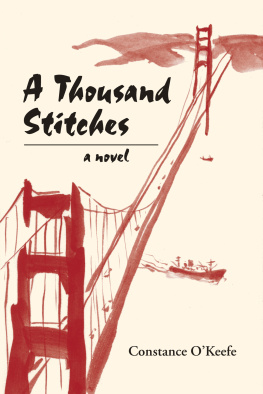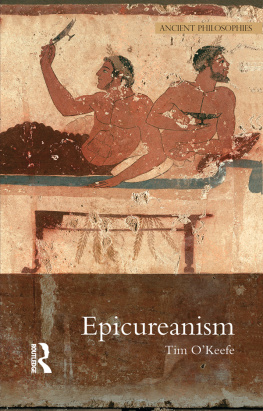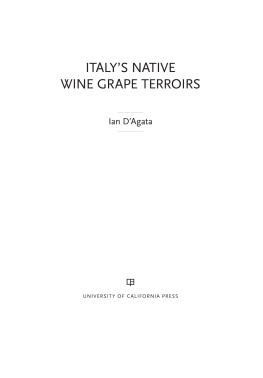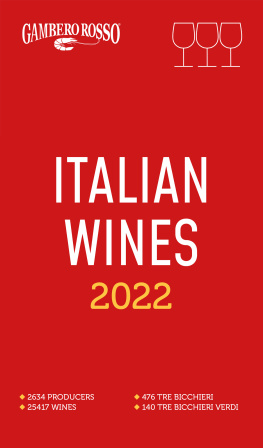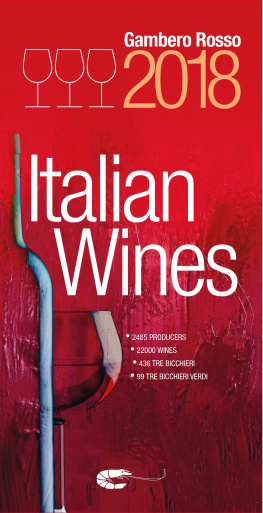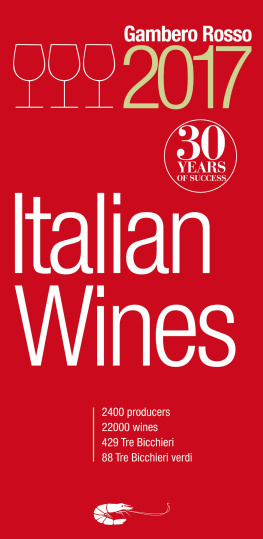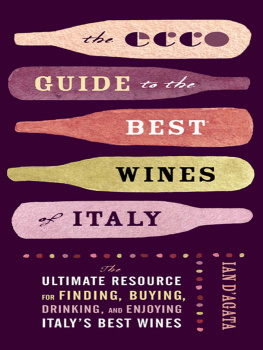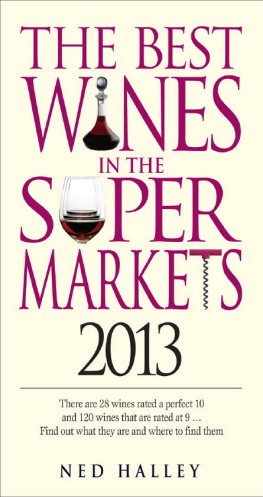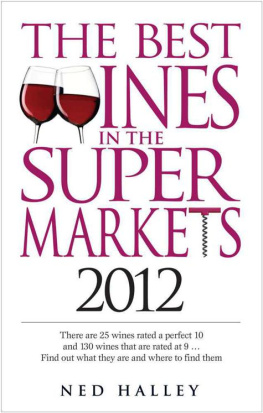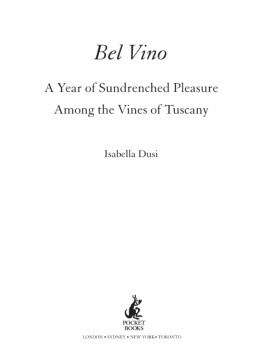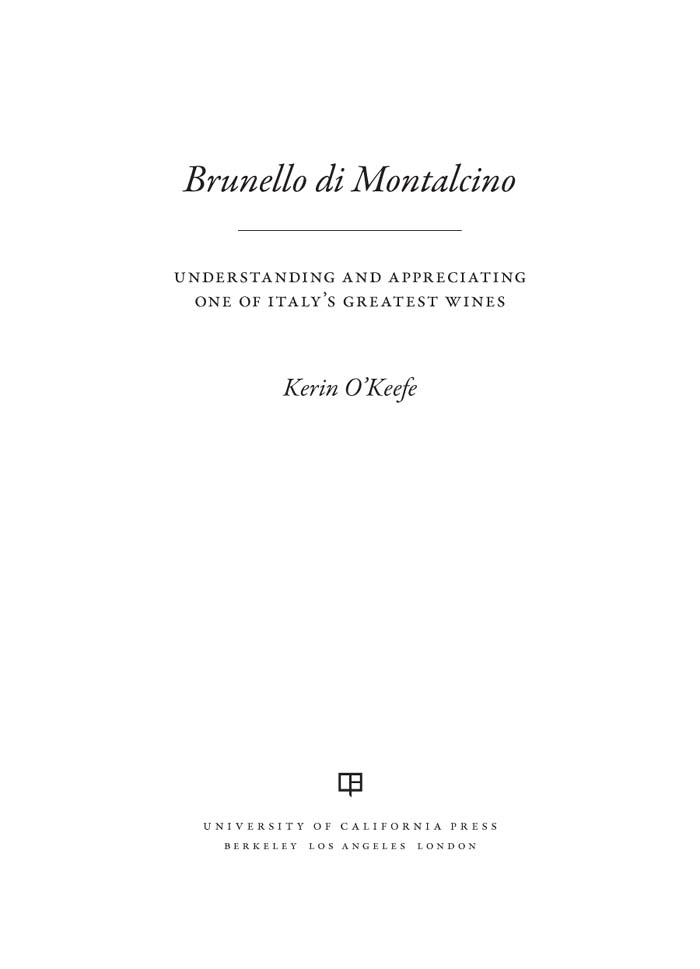ACKNOWLEDGMENTS
I would like to thank the following people for the help and time they gave to me while I was writing this book:
Stefano Campatelli and the staff of the Brunello Consorzio for answering many questions and for supplying crucial statistics;
Francesco Belviso, Ilio Raffaelle, Ivo Caprioli, and Montalcino Ieri for all their help re-creating Montalcino and Brunello history for me;
Dr. Roberto Bandinelli of the University of Florence and Professor Maurizio Boselli of the University of Verona for their expertise in clonal research and ampelography;
Paolo Vagaggini for his insight on Sangiovese and Montalcino;
Professor Edoardo Costantini of CRA-ABP Florence for sharing his research into pedology and geology;
Alessandro Benvenuti for his description of local geology;
Alessandra Gemmiti of ARSIA for documents on Sangiovese, Guila Zoi, and the Museo di Brunello for statistics;
the many producers who spent hours on end answering my barrage of questions, walking me through their vineyards, and opening numerous bottles of Brunello.
And most of all I would like to thank my husband, Paolo Tenti, for his photos, for reading the manuscript, and for his overall support, moral and technical, of the project.
APPENDIX A
Vintage Guide to Brunello
The star rating in this section is taken from the Consorzios vintage rating guide, bestowed at least in the past few decades after chemical and physical analysis carried out by a tasting committee of twenty industry professionals who work in Montalcino. However, particularly since 2000, many vintage ratings appear to be overly optimistic; it is clearly in the Consorzios short-term interests to boost vintage classification, even if by doing so the ratings have lost some credibility. I have added notes where I want to add any relevant information, and where I disagree with the official vintage ratings. Starting with 1990, I also suggest drink or hold. For detailed tasting notes on many older vintages please see the profiles of Biondi Santi, Costanti, Il Poggione, Col dOrcia, and Lisini.
1945 ***** |
1946 **** |
1947 **** |
1948 ** |
1949 *** |
1950 **** |
1951 **** |
1952 *** |
1953 *** |
1954 ** |
1955 ***** |
1956 ** |
1957 **** |
1958 **** |
1959 *** |
1960 *** |
1961 ***** |
1962 **** |
1963 *** |
1964 ***** |
1965 **** |
1966 **** |
1967 **** |
1968 *** |
1969 ** |
1970 ***** |
1971 *** |
1972 * |
1973 *** |
1974 ** |
1975 ***** | A breathtaking vintage still going strong. See profiles on Biondi Santi and Lisini. |
1976 * |
1977 **** | A surprising vintage that has aged very well. Drink. |
1978 **** |
1979 **** |
1980 **** |
1981 *** |
1982 **** |
1983 **** |
1984 * |
1985 ***** |
1986 *** |
1987 *** |
1988 ***** |
1989 ** |
1990 ***** | An excellent vintage. Drink. |
1991 **** | Drink. |
1992 ** | Drink. |
1993 **** | Drink. |
1994 **** | Drink. |
1995 ***** | An outstanding vintage. Drink or hold. |
1996 *** | Drink. |
1997 ***** | With very few exceptions, this is an extremely overrated vintage. A very warm year yielded wines that were soft, ripe, and approachable in their youth. Wines hailing from the higher reaches and closer to Montalcino fared the best and are aging well, but with few exceptions, this is to drink now. A horizontal tasting of 1997 in 2006 also showed that those Brunellos aged in barriques had not held up at all, with wood and alcohol dominating, while Brunellos from the classic zone and those offerings aged in large casks were aging the best. Drink. (Biondi Santis 1997: hold.) |
1998 **** | A sleeper vintage. Austere when first released, this evolved very slowly and bloomed after ten years. Drink or hold for another decade. |
1999 **** | An excellent vintage that is starting to bloom now but can be aged for another decade. Drink or hold. |
2000 *** | A very hot, dry year that produced warm, forward wines, especially exaggerated in the far south. Not a vintage for aging. Drink now. |
2001 **** | This is one of the few underrated vintages that deserved five stars. Well balanced and cellar-worthy across the denomination. Hold. |
2002 ** | A terrible vintage due to torrential rains at harvest time in September, though areas further south fared better. The higher reaches closer to the Montalcino fared the worst. Drink now. |
2003 **** | Overrated. One of the hottest, driest vintages ever in all of Italy. In Montalcino, Brunellos from the highest reaches closest to Montalcino fared better thanks to more elevated acidity. Other areas suffered from cooked fruit and low acidity, and had bitter tannins because the plants, which shut down during the severe heat and water stress, could not reach ideal ripening. Lowest vineyards in the deep south of the denomination suffered the worst. Drink now. |
2004 ***** | A gorgeous vintage. Sangiovese reached perfect maturation throughout the growing zone. The 2004s are defined by their impeccable balance and serious aging potential. Hold. |
2005 **** | Rain during the harvest compromised the crop in most of the denomination. While these Brunellos are not complex, and do not have age-worthy structures, they are perfect to enjoy now while the 2004s age. The 2005s are surprisingly elegant, almost delicate. When compared to the excellent 1999 and 2001 harvests, this should be a three-star vintage. Drink. |
2006 ***** | Overrated. If some 2006s boast exceptional structure and balance, many more are unbalanced, with massive tannins, low acidity, and soaring alcohol, sometimes topping 15 and 15.5 percent. While tannins need time to tame, due to lack of acidity, many will not age well. Drink or hold. |
(2007 *****) | To be released in 2012. Based on Rosso and barrel samples, looks to be a very good if somewhat forward and warm vintage. |
(2008 ****) | This wont be out until 2013, so evolution in wood during the aging process will be crucial. At the moment quality appears to be good but not exceptional. An intense hailstorm that steamed through the denomination in mid-August wiped out 40 percent of the crop in much of SantAngelo, so quantity will be down. This, and warm dry weather afterward, kept rot at bay and generated better-than-expected quality. |


